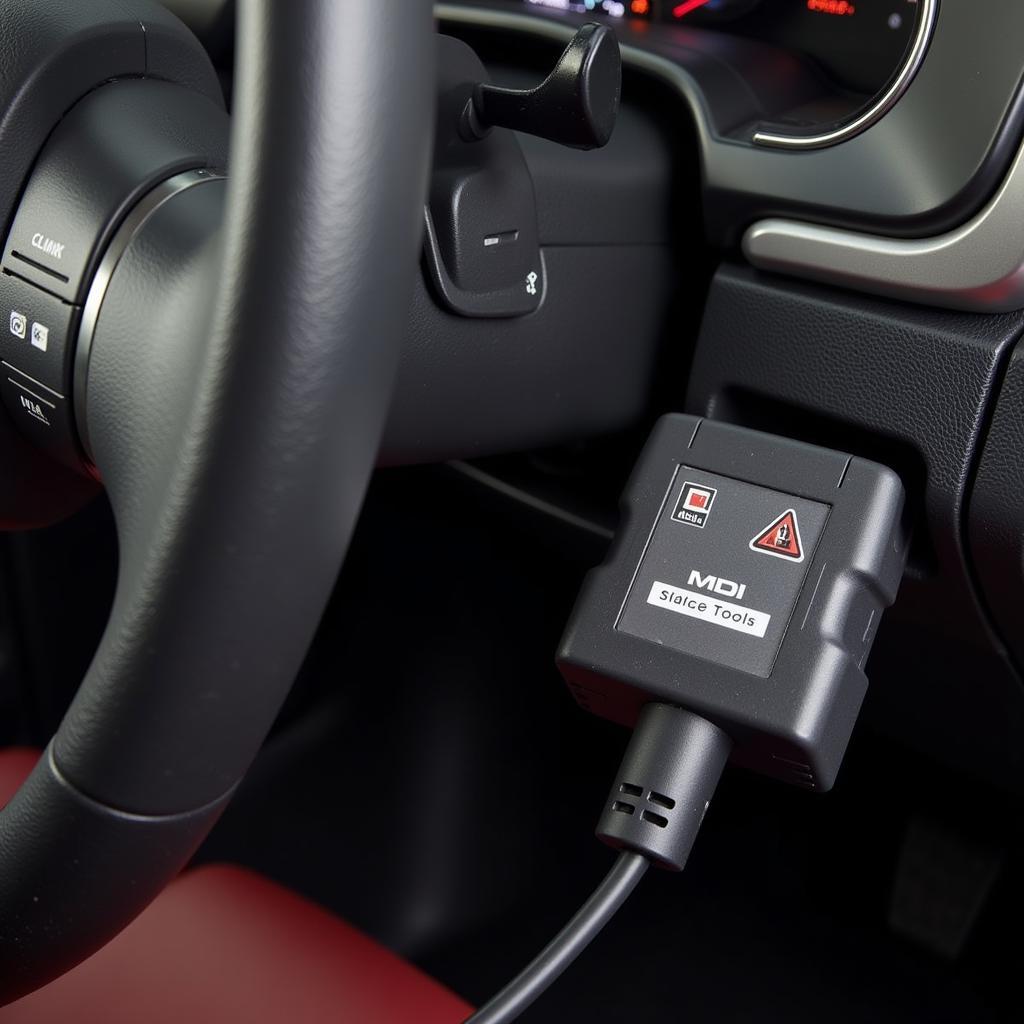Understanding diagnostic trouble codes (DTCs) is crucial for efficiently diagnosing and repairing modern vehicles. These codes, displayed on your scan tool, provide valuable insights into the health of your car’s various systems. This guide delves into the world of scan tool codes, focusing on the abbreviations and their meanings.
Are you a car owner baffled by a “P0301” code flashing on your dashboard? Or perhaps a mechanic looking for a quick reference guide to common DTC abbreviations? Look no further! This article will equip you with the knowledge to decipher these codes, empowering you to address car issues confidently. We’ll explore the structure of these codes, break down common abbreviations, and provide practical examples to solidify your understanding.
Deciphering the Code: A Closer Look at DTC Structure
A typical DTC comprises five characters: one letter followed by four digits. Each component holds specific meaning, providing a roadmap to the potential issue.
-
First Character: This letter identifies the system where the fault originates. The most common ones include:
- P: Powertrain (engine, transmission, emissions)
- B: Body (airbags, power windows, central locking)
- C: Chassis (ABS, traction control, suspension)
- U: Network & Communication (modules, wiring)
-
Second Character: This digit reveals whether the code is generic (applicable to all OBD-II vehicles) or manufacturer-specific.
- 0: Generic (SAE – Society of Automotive Engineers)
- 1: Enhanced (Manufacturer-specific)
-
Third Character: This pinpoints the specific system or sub-system related to the fault:
- 0: Fuel and Air Metering and Auxiliary Emission Controls
- 1: Fuel and Air Metering
- 2: Fuel and Air Metering – Injector Circuit
- 3: Ignition System or Misfire
- 4: Auxiliary Emissions Controls
- 5: Vehicle Speed Control and Idle Control System
- 6: Computer Output Circuit
- 7: Transmission Control
- 8: Transmission Control
-
Fourth & Fifth Characters: These two digits indicate the individual fault within the identified system, ranging from 00 to 99.
Common Scan Tool Code Abbreviations: Your Go-To Reference
Understanding the abbreviations within the DTC is key to efficient diagnosis. Let’s demystify some frequently encountered terms:
- CMP: Camshaft Position Sensor
- CKP: Crankshaft Position Sensor
- ECT: Engine Coolant Temperature
- IAT: Intake Air Temperature
- MAF: Mass Air Flow
- MAP: Manifold Absolute Pressure
- O2S: Oxygen Sensor
- TP: Throttle Position
- MIL: Malfunction Indicator Lamp (Check Engine Light)
Putting it All Together: Decoding Real-World Examples
Let’s apply our newfound knowledge to decode some common DTCs:
Example 1: P0301
- P: Powertrain
- 0: Generic code
- 3: Ignition System or Misfire
- 01: Cylinder 1 Misfire
Therefore, P0301 indicates a detected misfire in cylinder number one.
Example 2: U0100
- U: Network & Communication
- 0: Generic code
- 1: CAN (Controller Area Network) Communication
- 00: Lost Communication with ECM/PCM (Engine Control Module/Powertrain Control Module)
This code suggests a loss of communication between the vehicle’s control modules and the engine control unit, hindering data exchange.
“Understanding the language of your scan tool empowers you to work effectively on modern vehicles,” says John Smith, a veteran automotive electrical engineer with over 20 years of experience. “Accurate code interpretation allows for precise diagnosis, saving time and resources in the repair process.”
Conclusion: Empowering Automotive Repair Through Knowledge
Mastering the List Of Scan Tool Codes Abbreviations equips car owners, mechanics, and technicians with a powerful tool for efficient vehicle diagnostics. This understanding translates to accurate troubleshooting, leading to timely and effective repairs. Remember, a well-informed approach to DTCs paves the way for smoother, more cost-effective vehicle maintenance.
For expert assistance with your automotive electrical and diagnostic needs, contact ScanToolUS at +1 (641) 206-8880 or visit our office at 1615 S Laramie Ave, Cicero, IL 60804, USA. We are dedicated to providing top-notch solutions for all your car repair challenges.


